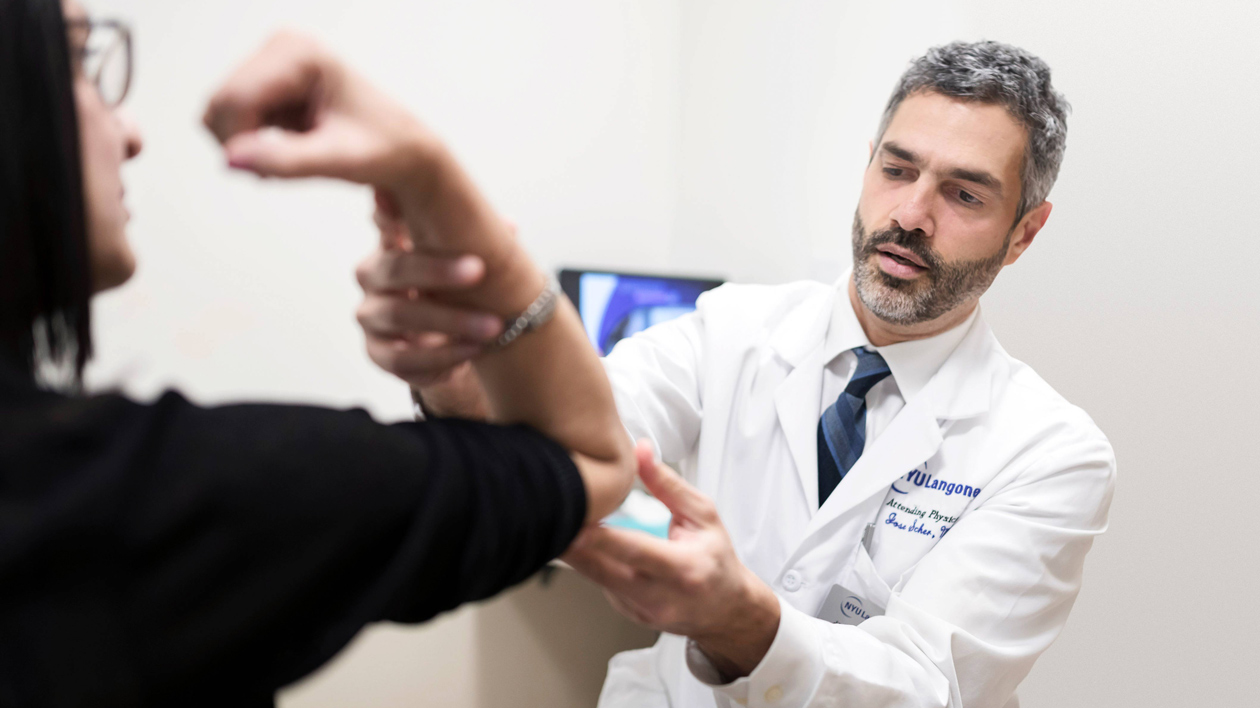Main content
We use cookies and similar tools to give you the best website experience. By using our site, you accept our Websites Privacy Policy.
Specialists at Hassenfeld Children’s Hospital at NYU Langone are experienced in diagnosing children and adolescents with juvenile arthritis, a group of autoimmune conditions that arise before age 16.
Usually, the immune system protects the body against bacteria, viruses, and other microbes that cause infections. In children with juvenile arthritis, however, the immune system isn’t working properly and launches an attack against the body, causing inflammation of tissue in the lining of the joints and other areas of the body. Juvenile arthritis is also called juvenile idiopathic arthritis, because the cause of the condition is unknown.

Depending on the type of juvenile arthritis your child has, he or she may experience a number of symptoms that can appear suddenly from time to time. For instance, some kinds of juvenile arthritis cause morning stiffness, which is noticeable swelling or stiffness in the joints that occurs after getting out of bed. Others cause fevers, rashes, back pain, or inflammation in tissues that surround internal organs, such as the heart and lungs.
Some children with juvenile arthritis develop uveitis, an inflammation of the middle layer of the eye, including the iris—the pigmented part of the eye. Uveitis does not usually cause noticeable symptoms but can lead to vision problems, such as cataracts, glaucoma, or even vision loss, if left untreated. Depending on the subtype and severity of your child’s condition, chronic inflammation in the joints can cause slower-than-normal growth.
Our specialists can make a juvenile arthritis diagnosis in children as young as six months old by conducting a careful physical exam. They may also use blood and imaging tests to determine the severity of your child’s condition and to rule out other causes of his or her symptoms. These tests can also help to predict your child’s risk of developing complications, such as joint and eye problems.
During a physical exam, the doctor asks about any symptoms your child has experienced recently, such as a high fever, stiffness or limping after waking up, or general clumsiness. The doctor examines your child’s joints for swelling and the skin for a rash. The doctor may also shine a small light into your child’s eyes to look for complications of uveitis, such as glaucoma, which leads to increased pressure in the eye, and cataracts, which are cloudy patches that form in the lens, making it difficult to see clearly.
The doctor also looks to see if your child has any difficulty walking, raising his or her hand, climbing onto the examination table, buttoning clothing, or performing other age-appropriate tasks that require fine motor coordination.
The doctor may order blood tests to see if autoantibodies, which are proteins that mistakenly attack healthy tissues in the body, are present. Children who have antinuclear antibodies—a type of autoantibody that is associated with many types of autoimmune conditions—may be more likely to develop uveitis. In children who are found to have another protein, called rheumatoid factor, there is an increased risk of arthritis symptoms continuing into adulthood.
Your child’s doctor may suggest additional blood tests, including a complete blood count and a C-reactive protein test, to identify other medical conditions that cause similar symptoms, such as Lyme disease and leukemia.
X-rays, MRI scans, and ultrasound tests can help to rule out other conditions that may cause a limp or muscle and bone pain, such as bone fractures, cancer, infection, or inflammatory muscle diseases, such as dermatomyositis, which also cause muscle weakness and a rash.
We can help you find a Hassenfeld Children’s Hospital doctor.
Call 646-929-7970
or
browse our specialists.